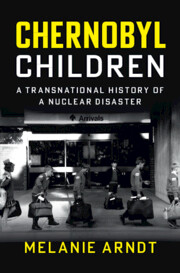Refine search
Actions for selected content:
271 results
8 - Anthropocene
-
- Book:
- Quaternary Climate Dynamics
- Published online:
- 17 December 2025
- Print publication:
- 22 January 2026, pp 202-228
-
- Chapter
- Export citation
Epilogue
- from Part III - Ripples
-
- Book:
- Violent Waters
- Published online:
- 17 December 2025
- Print publication:
- 08 January 2026, pp 313-327
-
- Chapter
- Export citation

Quaternary Climate Dynamics
- Integrating Paleoclimate Data, Modeling and Theory
-
- Published online:
- 17 December 2025
- Print publication:
- 22 January 2026
Chapter 6 - Global Warming and Artificial Intelligence
-
- Book:
- Entanglements in World Politics
- Published online:
- 27 November 2025
- Print publication:
- 11 December 2025, pp 222-271
-
- Chapter
-
- You have access
- Open access
- HTML
- Export citation
43 - The Earth Has Been Done
-
-
- Book:
- The Cambridge History of Australian Poetry
- Published online:
- 19 November 2025
- Print publication:
- 11 December 2025, pp 803-823
-
- Chapter
- Export citation
From Miserable Pedagogies to Anthropocene Intelligence for Universities in the Meta-Crisis
-
- Journal:
- Australian Journal of Environmental Education , First View
- Published online by Cambridge University Press:
- 28 November 2025, pp. 1-17
-
- Article
-
- You have access
- Open access
- HTML
- Export citation
Introduction
-
- Book:
- Kant and Environmental Philosophy
- Published online:
- 01 November 2025
- Print publication:
- 20 November 2025, pp 1-12
-
- Chapter
- Export citation
Chapter 6 - What Is the Human Being in the Anthropocene?
-
- Book:
- Kant and Environmental Philosophy
- Published online:
- 01 November 2025
- Print publication:
- 20 November 2025, pp 153-184
-
- Chapter
- Export citation
Uncooling the planet: Rewilding for function in a post-Pleistocene climate
-
- Journal:
- Cambridge Prisms: Extinction / Volume 3 / 2025
- Published online by Cambridge University Press:
- 14 November 2025, e15
-
- Article
-
- You have access
- Open access
- HTML
- Export citation
16 - Technologies in Environmental Governance
- from Part V - Governance by Technology
-
-
- Book:
- The Cambridge Handbook of the Governance of Technology
- Published online:
- 30 October 2025
- Print publication:
- 13 November 2025, pp 289-306
-
- Chapter
- Export citation

Kant and Environmental Philosophy
- The Climate Crisis and the Imperative of Sustainability
-
- Published online:
- 01 November 2025
- Print publication:
- 20 November 2025
4 - Climate Change Throughout Earth History
-
-
- Book:
- Essentials of Geomorphology
- Published online:
- 12 November 2025
- Print publication:
- 23 October 2025, pp 50-74
-
- Chapter
- Export citation
The anxious a priori: an essay concerning science, law, and the temporal politics of the Anthropocene polycrisis
- Part of
-
- Journal:
- Global Sustainability / Volume 8 / 2025
- Published online by Cambridge University Press:
- 20 October 2025, e49
-
- Article
-
- You have access
- Open access
- HTML
- Export citation
Systemic risks and governance of the global polycrisis in the Anthropocene: stability of the climate–conflict–migration–pandemic nexus
- Part of
-
- Journal:
- Global Sustainability / Volume 8 / 2025
- Published online by Cambridge University Press:
- 24 September 2025, e39
-
- Article
-
- You have access
- Open access
- HTML
- Export citation
Save the Bees and Save Ourselves: Young People’s Cli-Fi as Normative Myths of the Future
-
- Journal:
- Australian Journal of Environmental Education / Volume 41 / Issue 3 / July 2025
- Published online by Cambridge University Press:
- 07 August 2025, pp. 477-495
-
- Article
-
- You have access
- Open access
- HTML
- Export citation
Epilogue
-
- Book:
- Law and Inhumanity
- Published online:
- 20 June 2025
- Print publication:
- 17 July 2025, pp 121-125
-
- Chapter
- Export citation
Chapter 40 - Ecocriticism
- from Part VI - Critical Understandings
-
-
- Book:
- Sean O'Casey in Context
- Published online:
- 23 June 2025
- Print publication:
- 10 July 2025, pp 435-444
-
- Chapter
- Export citation
Through the surrealist looking glass: international theory, imagination, and the Anthropocene
-
- Journal:
- International Theory / Volume 17 / Issue 3 / November 2025
- Published online by Cambridge University Press:
- 08 July 2025, pp. 424-446
-
- Article
-
- You have access
- Open access
- HTML
- Export citation
Chapter 9 - Launching into a Brown Future
- from Part II - Transforming Genres
-
-
- Book:
- Latinx Literature in Transition, 1992–2020
- Published online:
- 19 June 2025
- Print publication:
- 03 July 2025, pp 167-184
-
- Chapter
- Export citation

Chernobyl Children
- A Transnational History of a Nuclear Disaster
-
- Published online:
- 26 June 2025
- Print publication:
- 14 August 2025
